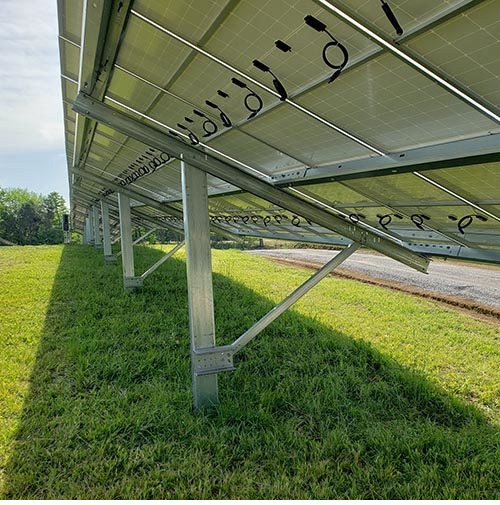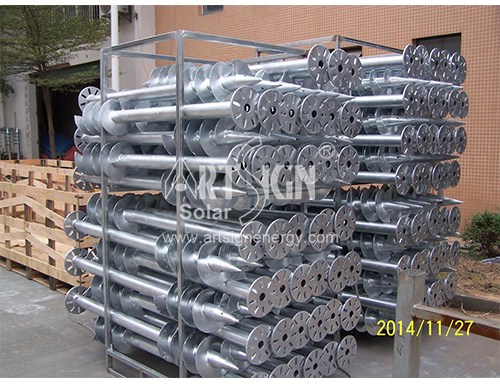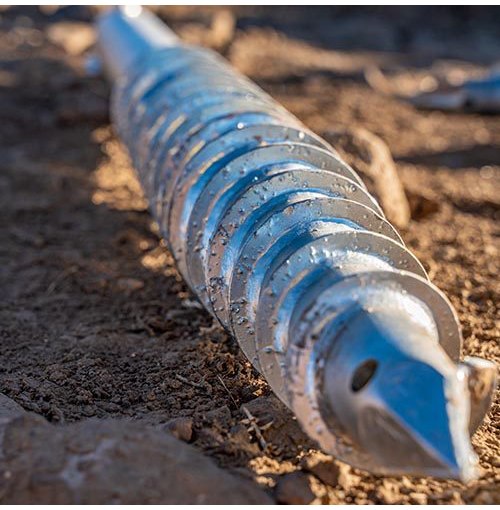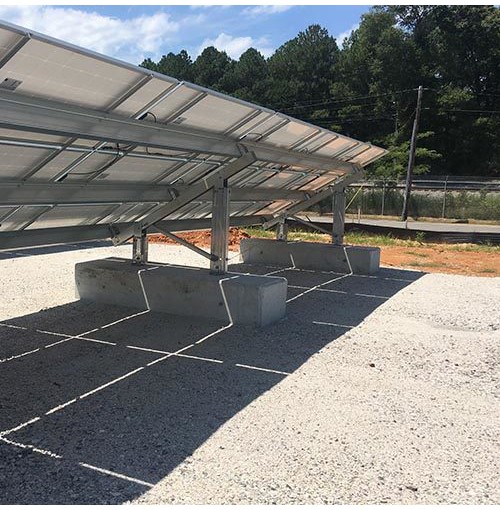The five most common solar ground mounting solutions — I-beams, helical anchors, ground screws, concrete piers and ballast — have specific homes across the country. It really depends on what’s going on in the soil underneath your feet.

I-beams
I-beams are a common component across the field of construction, used as structural supports in horizontal and vertical applications in buildings. They are also the most common ground-mount option for solar systems.
I-beams, H-beams or C-channels are installed using a piledriver that pushes them directly into the earth. Racking is then attached to the exposed beam. Beams can be mounted in clay, black and sandy soils, and work best when the site is rock-free. The soil’s friction keeps the piles in place.
For I-beams in sandy soil, embedment depth is based on grain size. Higher water tables can reduce friction and require a pile to be driven deeper than usual.
I-beams come with a higher price tag than some smaller post mounts, but are ideal for larger-scale Systems.

Helical anchors/piles
Helical piles are cylindrical posts with, as the name suggests, a helix that’s two or more inches wide, mounted or attached near the bottom of the post. Once driven the proper depth, the helix portion of the anchor will resist being pulled out by creating a cone of soil above it. Helical piles are installed by digging an initial guiding hole and using a skid steer with a rotating attachment to spin the mount into place. Artsign solar carries a helical anchor with replaceable helixes in various lengths to adapt to different ground conditions.
With a smaller surface area, helical piles will embed with minimal soil disturbance. The design of helical piles makes them ideal for sandy, black or clay soils, as well as areas with high water tables, where piles require greater depths for embedment. Helical piles will embed at shorter depths in soft and sandy soils compared to I-beams.

Ground screws work similarly to helical piles, also creating a cone of soil that resists upward tension. The ground screw’s difference in design lies in its threaded end that leads to a point, much like in carpenter screws.
To install a ground screw in dense soils, contractors core a pilot hole, set the screw inside and drive the mount into the ground using a rotary hydraulic drive or proprietary machinery. In medium-dense to loose soils, ground screws can be driven directly into the ground.
These mounts were built to work in rocky landscapes. The pointed, threaded end is outfitted with a forged chisel-tip that is able to push smaller rocks aside, and installers can even drill a starting hole into larger stones to rotate the ground screw directly into the ledge.
This mounting solution has a smaller post surface area similar to helical piles but comes in longer post lengths to ensure proper embedment depth. A set of racking can attach to ground screws of various lengths, keeping panels level while adjusting to varying topography.

Ballasts
Ballasted systems are a non-penetrating foundation solution for solar. Racking is attached directly to a footing, block or basket, and concrete is commonly used as the weight to hold it in place. The concrete is either precast, in which posted are mounted to blocks brought to the site; or concrete is poured into basins and cured on-site around the posts.
Deciding which concrete solution to use depends on site conditions, job costs and system size. Ballasted systems are often used on volatile sites, like landfills, brownfields and Superfunds, where the soil cannot be penetrated due to potential contamination.
The cast-in-place concrete solution is ideal for projects with low labor costs and easy access for heavy equipment. The site should be able to handle the weight of a concrete truck and requires handling concrete-pouring hoses. The precast route is suited for projects near distributors that can deliver the concrete blocks. With their modular design, they’re easy to deliver. Installers can take blocks off the trailer and set them on their designated position before attaching the racking systems.
Unit 301, No. 600 Guankou South Road, Jimei District, Xiamen, China
Tel : 0086 592 6266951 0
Whatsapp :+8618030235875
Email : sales@artsign.net.cn
Teams : Artsign Energy